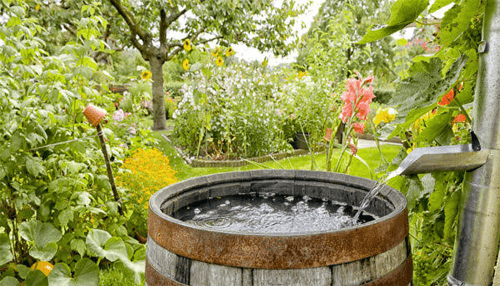A few paces to the right of your garage door is a five-foot-wide side porch that leads to your garden. A Rainwater-harvesting System project is currently underway that will make climate activist Greta Thunberg proud. The media buzz surrounding her has subsided, as all news material does. But it doesn’t mean you should relax and stop finding ways to repair our ailing planet.
People in many countries don’t have access to clean water. Yet, in most homes in America, how clean water is consumed is taken for granted. People brush their teeth with the faucet running or wash cars with running water from a hose. Precious amounts are wasted.
Your lush and well-manicured garden requires gallons and gallons of water to keep the plants healthy. Although Utah isn’t in the top 10 rainiest states, you plan to harvest rain to be used in your garden and for other water-saving purposes. You have a general idea of what’s required, but you need to know more details.
Here are a few ideas for you to consider if you’re planning to collect rainwater-harvesting:
Water Usage in America
The ratio of indoor-outdoor water usage in America is 70-30. The average consumption is estimated at 300 gallons per day. Indoor usage accounts for 70%, while outdoor usage is about 30%.
A Family of four using 100 gallons per person pays slightly less than $71.00 per month. The cost of tap water is about $2 per 1,000 gallons. The estimate is that you need about 0.625 gallons of water for every square foot of your garden.
Rainwater harvesting is traditionally done by collecting rainwater coming from the roof. The flow is usually channeled from a downspout, gutter, or pipe and collected on a receptacle on the ground, usually a drum or similar container.
Collecting Rainwater-harvesting
Your garden is 8,611 square feet and will, therefore, require more than 5,300 gallons. It would be neat if you could save this amount by using collected rainwater instead. Here are the things that you should note when building a rainwater-harvesting facility.
1. Check regulations: Rainwater harvesting is not against the law. It is encouraged. But there might be some regulations or restrictions in your locality. Check first before you implement your system.
2. It’s on the roof: Find out what your roof material is because some roof materials might contain toxins. If it’s going to be used for a decorative pond, there’s no issue. But you might need to look for other roof options.
3. Drums: There are different kinds of materials used for the drum or barrels as your rainwater container. This can be plastic, concrete, or terracotta. Some are more aesthetically pleasing but heavier. Plastic is the most preferred material because it’s light and cheap. Decide which direction you would like to go.
4. Safety first: The location of your barrel should be inaccessible to children. Secure the location so that children might not be able to play near or around the area.
5. Leaves and other debris: You need to regularly clean the gutter and get rid of leaves and other debris that might clog the flow of rainwater. Also, check the flow with a water flow meter.
Start with a small project and see how you have developed your system. You can always adjust to increase capacity. You need to attach a drain faucet and an air vent. But these five main points will get you started with your first rainwater-harvesting system.



